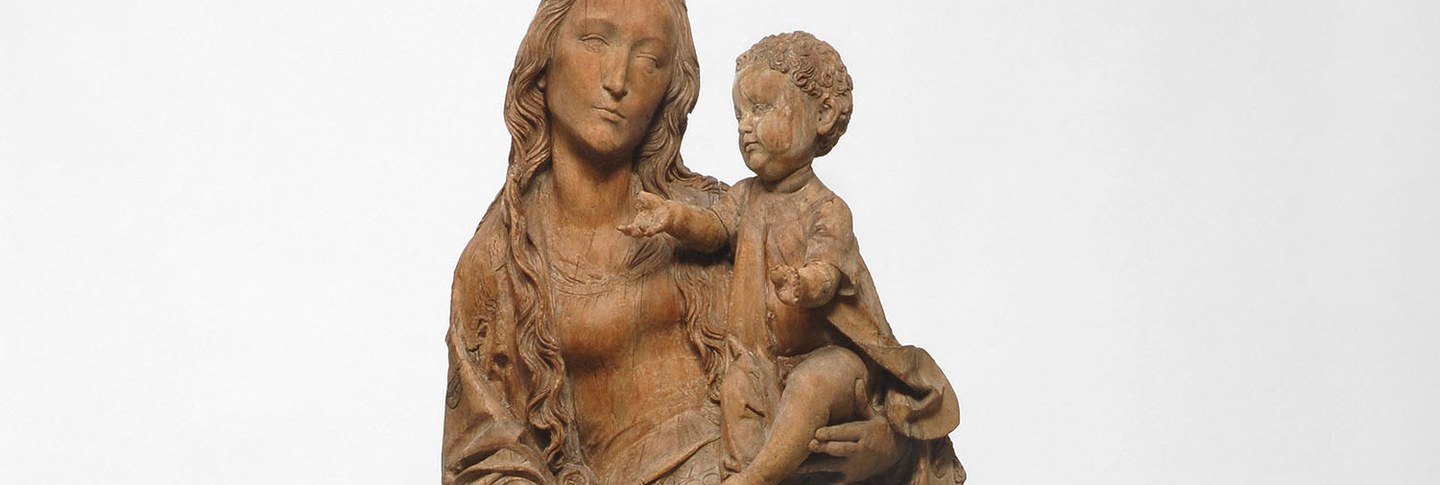The Music Room at Dumbarton Oaks is well known for its concerts, but the Blisses also designed it as a space for the display of Renaissance and Baroque art from the House Collection. An outstanding example is the sixteenth-century Virgin and Child on the Crescent Moon by the German artist Tilman Riemenschneider.
Mary is depicted as the lady atop the moon from Revelation, who stands between Heaven and Earth to watch over her children. Her somber expression is characteristic of Riemenschneider’s work, which is often steeped in the style of Gothic sculpture, but it can also be attributed to the intended function of this piece. The statue was a miniature workshop model for an altarpiece. In the full-sized version, the Virgin would have gazed in sorrow upon the salvific sacrifice of her son. Yet the Blisses’ interest in this piece was probably aesthetic rather than iconographic, as the collectors were more concerned with panache than devotional provenance.
Although the piece was intended as a model for larger, finished works, the rarely seen back of the sculpture is surprisingly complete. Close examination reveals stylistic inconsistencies that suggest subsequent revisions. For example, the flatness of the hair at the very top of the Virgin’s head, incongruous with the rest of her flowing tresses, indicates later remodeling to accommodate the removal of the fleur-de-lis crown that was originally part of the sculpture. Mary’s sharply gesturing right hand is a seventeenth-century replacement.
According to House Collection manager James Carder, before the Blisses acquired the sculpture, someone had “stripped a paint layer with lye and thereby had raised the grain of the wood.” Recent conservation work restored the original smoothness of the sculpture’s surface. Following short exhibitions at the Metropolitan Museum of Art and the National Gallery of Art, Riemenschneider’s Virgin and Child on the Crescent Moon returned to Dumbarton Oaks.
The Blisses intended the Music Room to match the elegance of their collection while still retaining a welcoming air, and its aesthetic makes it an ideal space to display a sculpture that, according to Carder, is of “a wonderful scale: imposing but not overwhelming.”
The Music Room is open to the public as part of the Dumbarton Oaks Museum on Tuesdays through Sundays from noon until 6:00 p.m.

